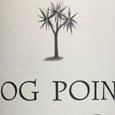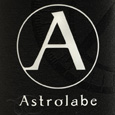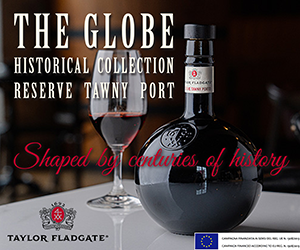Next week the wine world will gather in Wellington, New Zealand to focus on Pinot Noir NZ 2017.
Pinot Noir NZ 2017, held every four years, is a must-do event for pinot-philes, uniting 115 wineries and more than 600 wines to showcase to some 600 industry influencers and fans of the heartbreak grape from around the globe. I will be watching from home this year, waiting for the Kiwi Road Show to jump across Canada in May 2017. This year’s focus is Pinot Noir, with a trade masterclass and lineup devoted to New Zealand’s top red, second only to sauvignon blanc in production value.
Curiously, where pinot noir excels, so does chardonnay. And though hidden in the shadows of sauvignon blanc’s blinding successes, Kiwi’s chameleon chardonnay is primed for its time in the spotlight. During the 1990s, plantings of chardonnay exceeded those of every other grape, and it remains planted in every NZ region today. In 2016, chardonnay accounted for 9 percent of the total NZ wine production, at 29,000 tonnes. Styles range from light, crisp and mineral-driven, to riper, concentrated citrus and tropical fruit-laden versions. Growers work with a number of clones including Mendoza 4, 5, 6, 7, number 5 from California and Dijon 95 and 96. Picking dates vary widely depending on the site but chardonnay’s early bud burst and frost susceptibility prompts earlier picking times, preserving acidity.
Typical of chardonnay, styles range dramatically, communicating both terroir and vintner. That said, climate almost always underlies the regional style. Generally, the warmer climates of the North Island’s Gisborne and Hawke’s Bay typically yield fuller-bodied, ripe stone fruit and tropical flavours with softer acidity, while the cooler, Southern Island shows medium to lighter bodied wines, with greater acidity and minerality, and fresh, citrus and savoury flavours. That’s a snapshot, but let’s look at Kiwi chardonnay with a zoom lens:
*note: planted chardonnay area is 2014 data
NORTH ISLAND
Auckland
• 64 ha planted
• Warm, even climate gives bold, ripely fruited wines with good weight and fresh, balanced acidity.
• An extensive volcanic history has overlain ancient bedrock with much younger material.
Gisborne
• 936 ha planted
• High sunshine hours and a warm climate yield aromatic, ripe and tropical chardonnay, with a lush palate, lower acidity and early drinking accessibility
• Hilly landscape falls into the flood plains of the Waipaoa River; A mix of clay and silt loams with fine silt river loams (aromatic wines) and heavier clay soils on the plains (fleshier wines)
Hawke's Bay
• 1006 ha planted
• Concentrated, medium-full bodied wines with peach, melon and grapefruit citrus
• Powerful, ripe with excellent fruit intensity.
• Broad range of soil types, creating significant impact on viticulture and wine styles: Densely-planted plains are alluvial over gravely sub-soils; Havelock is more sandy loams over clay pans; Hastings is surrounded by loamy-clays; Gimblett Gravels is arid, stony and red-metal laced; Bridge Pa Triangle contains the oldest soils on the Heretaunga Plains and consist of low fertile, free draining alluvium deposit or eroded ash, loess and underlying sediments.
Wairarapa
• Concentrated, elegant and generally laden with ripe stonefruit, citrus and earthy stone.
SOUTH ISLAND
Nelson
• 93 ha planted
• The sunniest region yields pure, richly fruited wines tending towards tropical, stonefruit notes, with depth and intensity
• Two sub-regions, largely distinguished by soil type: Waimea Plains with alluvial river soils; Upper Moutere with gravel-threaded clay soils
Marlborough
• 1038 ha planted
• Typically zesty, with good acidity, grapefruit/citrus flavours and nectarine. Styles range from crisp and unoaked to fully wooded versions.
• Cooler, drier conditions in the Southern Valleys and Awatere sub-regions; warmer and wetter in Wairau.
• Deep gravelly silt and clay- based, free-draining soils
North Centerbury & Waipara Valley
• 83 ha planted
• Finely structured, poised citrus-driven wines with good depth of flavour.
Central Otago
• 52 ha planted
• fresh, focused and tight in youth, and complex and age worthy; reflective of the cooler climate and higher altitude.
• Distinct mineral purity, fine citrus and delicate florals
• Continental climate with high UV and sunshine hours
• Free-draining, low-vigour schist gravels, with overlaying or intermixed loess, silt or sand, and with a high mineral content
Waitaki Valley
• Recent expansion into the inland sub-region of Waitaki Valley on the North Otago boundary shows real promise; its loess and limestone/greywacke/schist soils, warm summers and long dry autumns give varietal intensity, complex fruit and a distinct mineral character.
The Future for Chardonnay
I noticed some distinct chardonnay trends during my travels in New Zealand, primarily surrounding vessels, and phenolics. Mirroring chardonnay everywhere, oak use has long been the stylistic fermentation and storage vessel, dominating the premium and super premium categories, and with consumers conditioned to associate the wood with the grape. Of course, not all oak is negative; the subspecies, forest, side of the hill, time and geographic location of the trees has an effect, and cooper, size and age of the wood has a large impact. Much more recently, alternative fermentation vessels are in use, including terracotta, concrete and granite. Winemakers are experimenting with the lining, porosity, shape and size of these vessels, studying the convection currents and resulting lees effect.
There is also a surging movement of vintners working with phenolics, combating the old school thinking that phenolics was always bad in white wines. There are more than thirty different types of sulfides, some positive and some negative, and all imparting distinct and different aromas and flavours. Generally, it’s not an all-or-nothing decision; as with oak, the level of use often dictates the final wine’s style and success. Too much phenolics can make the wine broad and coarse, but balanced wisely, the structure, length and mouthfeel benefits are astounding, especially matched up against the UV intensity and purity of New Zealand fruit. Vintners are finding that fermenting solids in new oak works well (power vs power), and incorporating some degree of solids in the fermentation gives that something more to the wines – that backbone, concentration and ability to age.
Considering that 70 percent of vines in New Zealand are less than twelve years old, the future is bright for chardonnay, and who knows, one day it may again give sauvignon blanc a challenge on the podium.
Here are a selection of New Zealand chardonnays I have tasted in the past year, ranging across style and region.

 quicksearch
quicksearch































